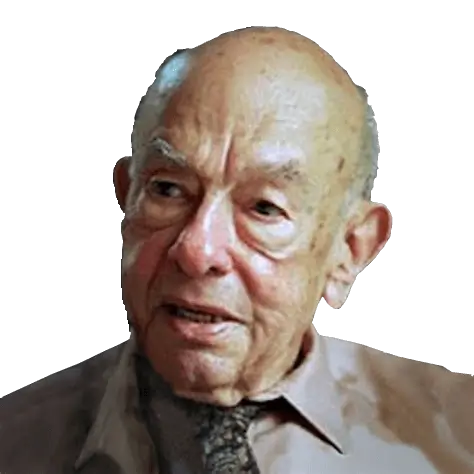Quine’s Paradox
Quine’s paradox, originated by Willard Quine is the following statement (Note: there are several variations on the exact presentation of the statement):
“Yields falsehood when preceded by its quotation” yields falsehood when preceded by its quotation.
The supposed paradox is that the expression - Yields falsehood when preceded by its quotation - when preceded by itself in quotation marks, gives a new expression. If this new expression is true, then it says of itself that it must be false. But if it is false, then what it says of itself is true.
In the supposed paradox, the term
quotation
appears to be a variable term, since, in the above expression, the value of the variable ‘quotation’ is supposedly specified by the use of ‘its’, where one is invited to assume that it refers to
“Yields falsehood when preceded by its quotation”
But an invitation to assume something is not acceptable for rigorous logical analysis. Without making any such assumptions, we can simply take the phrase:
yields falsehood when preceded by its quotation
and precede it by:
its quotation
which gives:
its quotation yields falsehood when preceded by its quotation
Now, supporters of the supposed paradox will then tell you, “No, that is not what is meant” and that it means that you precede the phrase:
yields falsehood when preceded by its quotation
by the phrase itself enclosed in quotation marks. Well, then, if that is the case, why isn’t it so defined at the outset rather than the ambiguous phrase originally given? So let’s define it this way to avoid any ambiguity. But does this resolve the problem? This would give:
yields falsehood when preceded by this phrase itself enclosed in quotation marks
So we take this phrase:
yields falsehood when preceded by this phrase itself enclosed in quotation marks
and precede it by:
this phrase itself enclosed in quotation marks
to give:
this phrase itself enclosed in quotation marks yields falsehood when preceded by this phrase itself enclosed in quotation marks
But we see that we are no further forward. So while the claim is that there is no direct self-reference, for a paradoxical contradiction to arise, either it has to be explicitly asserted (as in the Wikipedia article, see below) or it has to be implicitly assumed that:
its quotation = “ yields falsehood when preceded by its quotation”
But now it is patently obvious that
its quotation
is defined in terms of itself, so there is a direct self-reference.
Phrases as Syntax and Phrases as Objects
Of course, the problem is that in order to generate a paradox one has to read the phrase
yields falsehood when preceded by its quotation
both as syntax of the language, and at the same time, as an object of the language. Given the statement:
“Yields falsehood when preceded by its quotation” yields falsehood when preceded by its quotation.
we are being asked on the one hand to read the latter half of the expression as syntax in order for the expression to be meaningful at all, whereas we are also being asked at the same time to read the latter half of the expression as an object of the language. At first glance this may not appear to be the case, and that it is only the first part of the expression that we are to treat as an object (the part enclosed by quotation marks). But to generate the “paradox”, one has to assert a particular correspondence between certain terms that are objects of the language. That correspondence is between the:
it
in the term:
its quotation
and the second part of the expression itself, which is:
yields falsehood when preceded by its quotation
Clearly, it is an object of the language, so to assert the above correspondence requires that one must also read the second half of the expression as an object (a correspondence between an object and a non-object within the same language is an absurdity) so that one can confirm that the it in its quotation refers to the actual sequence of symbols that is:
yields falsehood when preceded by its quotation
and which occurs in the latter part of the overall expression.
Logical analysis reveals that the apparent complexity of the formulation of the “paradox” merely serves to obfuscate what is happening. And we can also analyze it in another way. Since the expression:
yields falsehood when preceded by its quotation
begins with a verb “yields”, if it is to generate a valid sentence, then it must be preceded by an object. If preceded by something that is not an object, then the result is not a valid sentence. So if we want to remove any ambiguity, then the obvious way to do so is to formulate the expression:
where
“
yields falsehood. But obviously, since all such expressions consists only of consecutive objects of the language, no such expression can be a valid sentence of the language, and cannot have a truth value. Again, logical analysis reveals that the supposed paradox is merely the result of conflation of syntax and objects of the language in question - in order for a paradox to arise, one must take an expression to be at the same time syntax of the language and an object of the language.
This shows that Quine’s paradox is simply a convoluted version of the Liar paradox, where the use of quotation marks as delimiters fails to prevent the ambiguity inherent in natural languages such as English. It is inherent in natural languages that syntax and objects are easily confused, and because of that one must examine any claims of self-reference made in natural language with logical rigor, and not take them at face value.
By applying rigorous logical analysis, Quine’s claims are all seen to be elementary logical errors, where he allows the confusion of expressions that are syntax of language with expressions that are objects of language. In terms of levels of language, expressions of a sub-language, while they constitute valid syntax in that language, are seen as objects by a meta-language and which have no syntactical meaning in that meta-language. In the case of syntax of language, it is possible for two different expressions to be equivalent, but in the case of objects that are simply sequences of symbols without any attached meaning, it is not possible for two different sequences of symbols to be precisely equal.
Of course, natural languages such as English permit ambiguous statements where levels of language are intermingled, and where objects and syntax can be confused. But no-one should imagine that there is any valid logic in those statements or that there is any valid meaning in them.
Wikipedia version
In the Wikipedia article on Quine’s paradox (as of 12th November 2016) the claim is that the paradox can be clarified by:
- it = yields falsehood when preceded by its quotation
- its quotation = “ yields falsehood when preceded by its quotation”
- it preceded by its quotation = “ yields falsehood when preceded by its quotation” yields falsehood when preceded by its quotation.
If these equalities are correct then we can take the expression:
“ yields falsehood when preceded by its quotation” yields falsehood when preceded by its quotation.
and substitute according to equality 2 to give:
its quotation yields falsehood when preceded by its quotation,
and substitute again by equality 1 to give:
its quotation it
which is nonsensical, yet if the equalities given are correct, that is an entirely logical application of the given equalities with the inevitably absurd result.
Smullyan and self-reference
Raymond Smullyan has written several books which contain numerous informal self-referential paradoxes, many of which are similar to Quine’s paradoxes, see the page Smullyan’s Paradoxes.
Other paradoxes



Rationale: Every logical argument must be defined in some language, and every language has limitations. Attempting to construct a logical argument while ignoring how the limitations of language might affect that argument is a bizarre approach. The correct acknowledgment of the interactions of logic and language explains almost all of the paradoxes, and resolves almost all of the contradictions, conundrums, and contentious issues in modern philosophy and mathematics.
Site Mission
Please see the menu for numerous articles of interest. Please leave a comment or send an email if you are interested in the material on this site.
Interested in supporting this site?
You can help by sharing the site with others. You can also donate at where there are full details.
where there are full details.